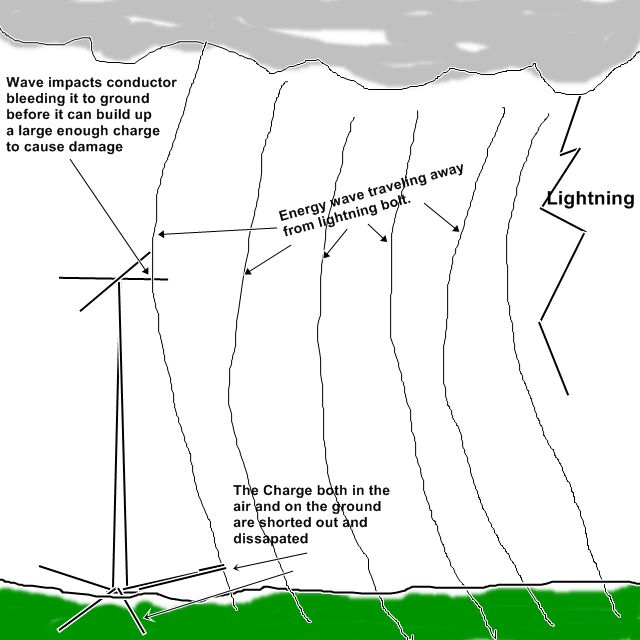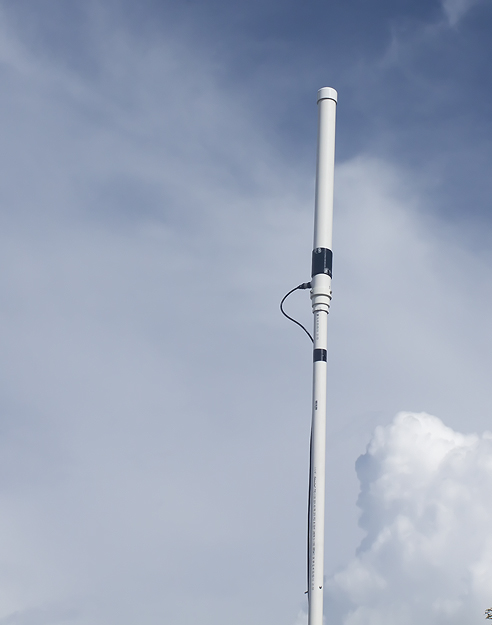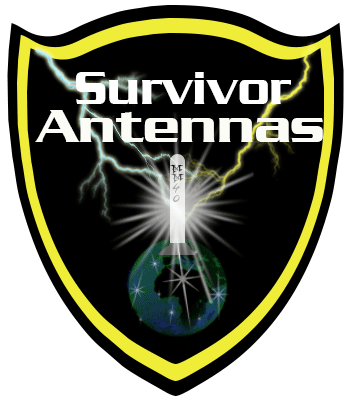|
Home
News
Antennas
Photo Gallery
Testimonials
 Articles
Articles
Contact us
Installation
|
NOTE: This is one persons opinion, and because the
world is sue happy I place this disclaimer at the top of
this article. Use this information at your own risk..
Lightning seems to be poorly understood by a great many of
us, that is why I write this article. The information
here is compiled from many sources. Many of them real
world experiences including by my own, and by talking to
many other radio operators, professional tower installers,
including commercial sites.
A
little History of my own
Some time back a church had their own radio station in which
I was involved. It was on a 100 ft. tower with a
commercial FM broadcast antenna. Repeatedly the station was
damaged by lightning and I was consulted on what to do.
I told them to buy a "Christmas Tree" (common
venacular for a commercial lightning arrestor for large
tower installations like television) They said it was
too expensive and wanted an alternative solution so I gave
them one.
I told them to put four 50 ft. wires, attached
to the top of the tower just below the antenna. Each
wire spaced about 90 degrees apart, and attached to nearby
trees for support. Next I told them to ground the
tower with wire laying on the ground in a similar fashion as
on the top of the tower but to add as many wires as they
could afford. (The tower was on a mountain and poor ground
for conductivity). They put several 100 ft. wires,
attached to the base of the tower on the ground and let
nature bury them.
After the above was done, they
never had another lightning related failure or problem.
Here is the reason why?
Notice the picture on the left,
it represents a tower or any other conductor on the ground.
When a lightning bolt occurs, it produces a massive energy
wave capable of enough energy to cause fires, and literally
blow equipment apart, even buildings. On the left notice
that when the energy wave strikes the tower, ALL of the
energy contained in that part of the wave that contacts the
metal is instantly transferred to the tower. If the
tower is not grounded the energy will find another way to
ground, usually what ever is closest, and bleed off the
energy causing damage or worse. If the tower has a
poor ground, the situation isn't much better, at least some
of the energy will dissipate in nearby objects, like your
radio! Now look at the picture on the right.
With a conductive horizontal surface, a beam antenna or some
other spread out conductor, connected to the tower top, the
energy wave makes contact FIRST, with the outer edges of the
conductor/s extending out from the tower itself. This
gives the energy a path to discharge on, BEFORE the energy
wave actually makes full contact with the tower. Thus
bleeding the energy off before it can build up fast enough
to cause damage. This
requires a good ground to function properly.
That is why I told the church people to put ground wires on
the ground connected to the base of the tower. This
forever eliminated lightning induced damage. Similar
results have been reported by many operator. So
grounding your tower will at least provide some protection,
if you are unsure of your ground/soil conductivity, I would
suggest you place a few 12 ga. wires in the ground radiating
away from your tower or what ever object you want to
protect, at least 4 wires 90 degrees apart if you can, and
100 ft. long. Use whatever length wire you have if
nothing else. Every little bit helps in poor ground. I
believe the church used 8 wires on the ground. Note,
some people poor salt on the ground, and this works, but
depending on rain and soil material, it will wash away and
leave you unprotected at some point.


|



